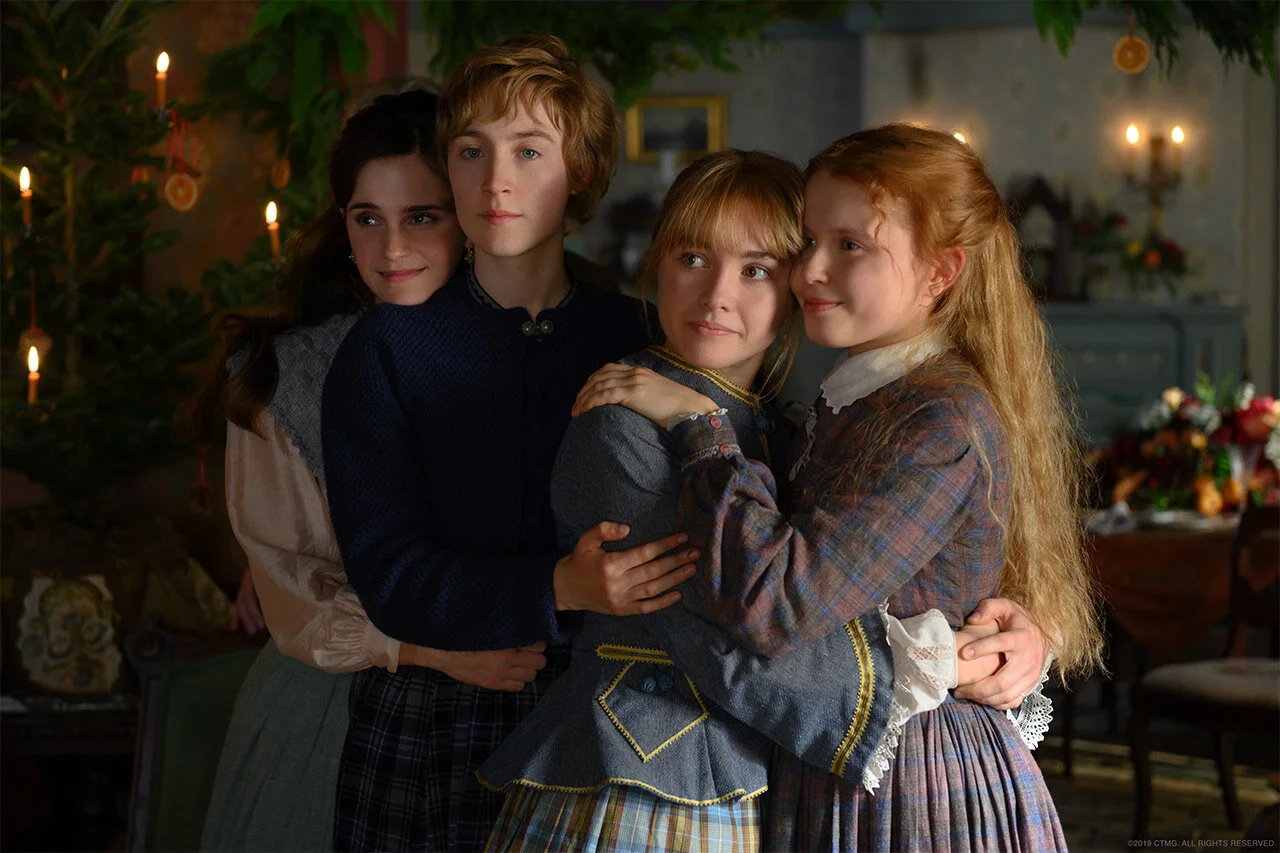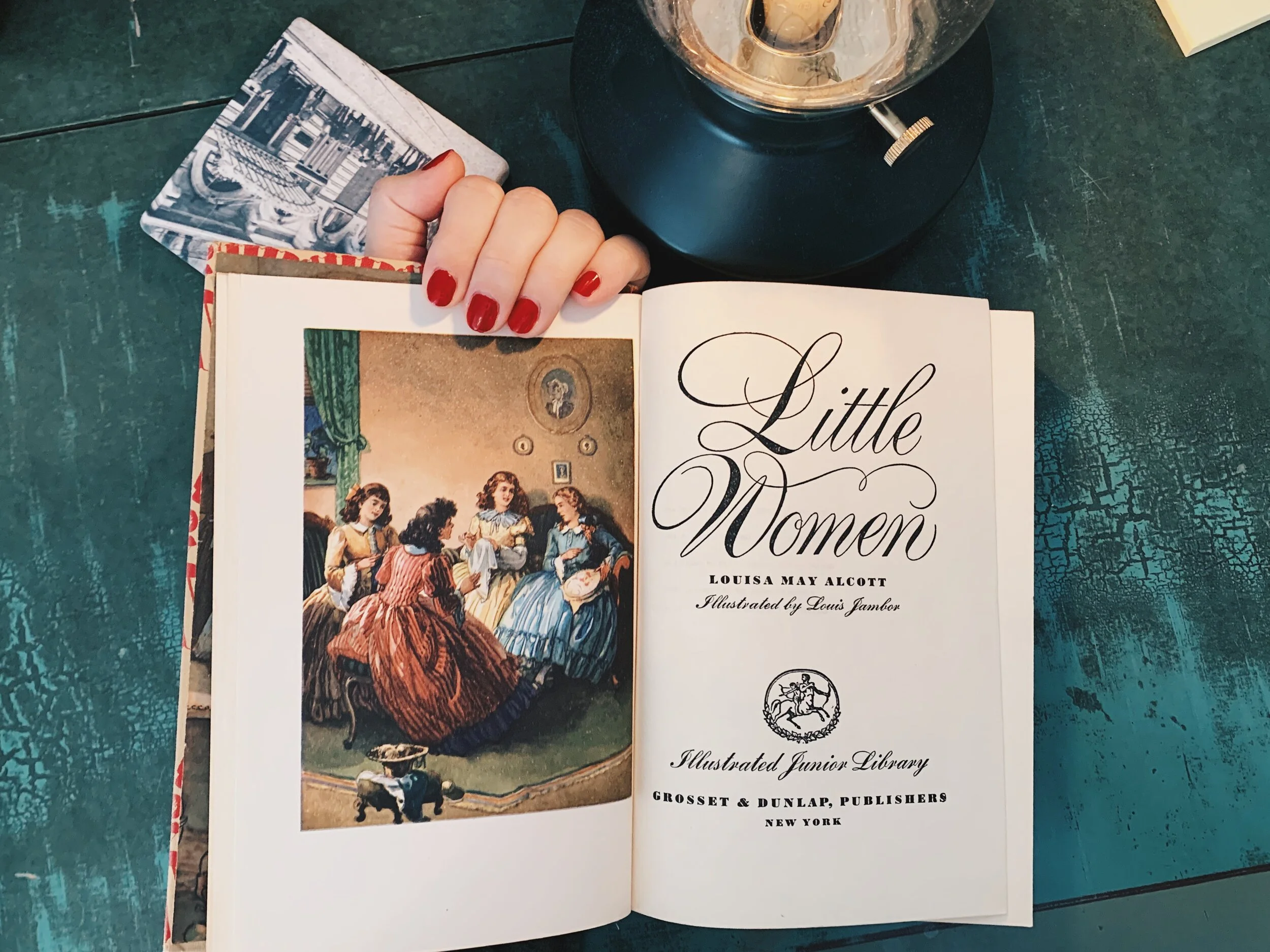What to Watch After Little Women : Six Movies About Sisterhood
Image via Sony Pictures / Little Women.
A seminal piece of dialogue in Greta Gerwig's Little Women comes at the very end, between sisters Jo and Amy:
“Writing doesn’t confer importance. It reflects it.”
”Writing things is what makes them important.”
This line retrospectively shines a new light on the movie, and makes the viewer reflect on the themes of the story they just witnessed, both explicitly developed and implied . To be sure, Little Women is a movie about female ambition, about loss, about creation. It is also, very simply, a story about sisters and the complex relationships they share — from the sheer hatred Joe feels for Amy when the latter burns her book, to the all-encompassing love Joe shares with Beth on a grey day at the beach. When I left the theater after watching Little Women, I found myself wanting more of the warmth I had just witnessed on screen. Thankfully, a number of directors have seized the universal theme of sisterhood in the past. No matter the genre, the country, or the time period, there is a movie for everyone willing to dive into this ever-changing tale. From the horror thriller to the musical, from the romantic drama to the melodrama, here are six movies about sisters.
♥︎
What Ever Happened to Baby Jane? Robert Aldrich (1962)
Let's start with what might be the furthest thing from Little Women. What Ever Happened to Baby Jane might be as terrifying and gripping as the Greta Gerwig's movie is warm and comforting, but sometimes, this psychological thriller is just what you need to translate your ambivalent feelings to your sister to the screen.
Still from Whatever Happened to Baby Jane? (1962).
Living in a dilapidated mansion with her sister Blanche (Joan Crawford), a former actress retired after a terrible — and mysterious — accident, "Baby Jane" (Bette Davis) is a former child actress herself who slowly descends into alcoholism and madness. Perpetually living in her past glory, dressing and talking as the little girl she was in spite of being middle aged, Jane slowly becomes a threat to the sister she envies and hates. The movie is nourished by the infamous real-life rivalry shared by the two greatest actresses of their time, that Aldrich was smart enough to reinvent as a deeply rooted sisterly jealousy.
♥︎
Les Demoiselles de Rochefort, Jacques Demy (1967)
Sisterhood is just as synonymous with complicity as it (occasionally) is with rivalry, and what better genre to underline this harmony than the musical? The colorful and joyful set of Les Demoiselles de Rochefort (sometimes known in English as The Young Girls of Rochefort) is the perfect decor to highlight the life of Delphine and Solange, two twin sisters "born under the sign of Gemini," dreaming of dance, music, love, and of a life outside of the small seaside town of Rochefort. Gene Kelly, the biggest star of the movie at the time, shines next to a young Catherine Deneuve and her real-life sister Françoise Dorléac.
Still from Les Demoiselles de Rochefort (1967).
♥︎
Howards End, James Ivory (1992)
Sisterhood is an ideal theme for the novel, because it can be exploited as a literary laboratory: though they are raised in the same circumstances, two sisters rarely have the same temperament, and their diverging characters lead them on very different paths of life. Jane Austen gave a magistral demonstration of this idea with the Dashwood sisters in Sense and Sensibility, and Elizabeth Gaskell deepens it in Wives and Daughters. E.M. Forster was influenced by both when he wrote Howards End. Set in the cosmopolitan bourgeoisie of Edwardian Britain, published just four years before the First World War, the story of the Schlegel sisters exemplifies the novelistic nature of sisterhood. Although they are both raised in a love of art and culture, the eldest sister Margaret choses to marry into a conservative and wealthy family, when her sister Helen, for better or for worse, stays true to her ideals of equality and freedom. The novel was beautifully adapted by James Ivory (who also wrote the screenplay of Call Me by Your Name) — and Helena Bonham Carter and Emma Thompson, both queens of the period drama genre, are wonderfully cast as the Schlegel sisters.
Still from Howards End (1992).
♥︎
海街日记 (Our Little Sister; based on the manga “海街diary,” trad. "Seaside Town Diary"), Hirokazu Kore-eda, 2015
Family, and sisterhood especially, is not always innate: sometimes, it is acquired. The very delicate Our Little Sister tells precisely the story of young-adults sisters Sachi, Yoshino and Chika, who raised each other after their parents abandoned them, who separated and remarried when they were little girls. The movie opens on them hearing about their father's death and discovering the existence of Suzu, their teenage stepsister. The three sisters invite the young girl to live with them, and what follows is a delightful and moving depiction of a family in the making.
The film was selected to compete for the Palme d'or at the 2015 Cannes Film Festival, an award Kore-eda eventually won in 2018 for another story about found families, the poignant Shoplifters.
Still from 海街日记 (Our Little Sister) (2015).
♥︎
Mustang, Deniz Gamze Ergüven, 2015
When it premiered five years ago, Deniz Gamze Ergüven's debut feature Mustang set off a wave of unexpected enthusiasm. Its instant success was maybe linked to the similarities between its synopsis and the story of Sofia Coppola's Virgin Suicides: five sisters, trapped in their home by abusive relatives, are trying to make a life for themselves. But where Virgin Suicides was mostly interested in the evanescent and mysterious nature of the American sisters, strictly shown through the point of view of their five young male admirers, Mustang dives deep into the inner lives of its protagonists, kept prisoner in their rural, conservative Turkish town and dreaming of Istanbul. This captivity is paradoxically what will make the connexion between the sisters even stronger.
Still from Mustang (2015).
♥︎
A Vida Invisível (translated from Portuguese to: The Invisible Life of Eurídice GusmãoI), Karim Aïnouz, 2019
Much like Mustang, The Invisible Life of Eurídice Gusmão debunks the belief that patriarcal aggravations are enough to destroy the relationship between sisters. Karim Aïnous adapts here Martha Batalha's novel of the same name in a beautifully photographed melodrama, set in Rio de Janeiro in the 1950s. As teenage girls, Eurydice and Guida couldn't be more different: where Eurydice is serious, quietly invested in her love of the piano, Guida is joyful and passionate, and doesn't hesitate to slip away from her conservative father's tight surveillance. Everything changes, however, when Guida is seduced by a Greek sailor: the two sisters are abruptly separated and will from now on lead diametrically different lives, Eurydice in the bourgeoisie of Rio, and Guida among the working-class. In spite of the struggles the both continually encounter on their way, however, Guida and Eurydice never forget one another, and keep on writing to each other until the end.
Still from A Vida Invisível (2019).
♥︎
Little Women fits into a great tradition of films about sisters — sisters who hate each other, sisters who love each other, and sisters who stand with each other against the world. If you're looking to see more of these stories, I hope you enjoy this list.
Milena Le Fouillé is an art historian based in Paris, France, with a specialty in nineteenth and twentieth century art and a strong taste for mythology, fairy tales and legends. She's probably hiding in a museum's cafeteria right now, reading a novel when she really should be working.




















In her first piece for The Attic on Eighth, Kara Thompson shares five period dramas to get you out of your winter blues and into springtime gladness.